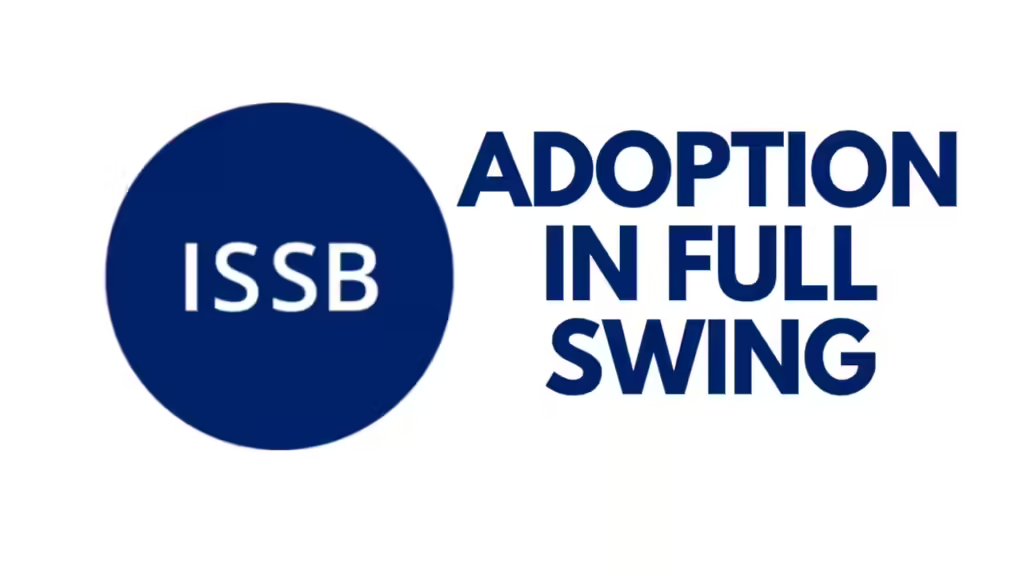Tim Mohin: ISSB Adoption In Full Swing

Almost a year after the International Sustainability Standards Board (ISSB) released its first two standards, they announced this week that more than half of the world’s economy has adopted them.
The ISSB standards were created to consolidate and simplify sustainability disclosure standards and, indeed, they have acquired more than a few of the so-called “alphabet soup” of other ESG standards (SASB, IIRC, TCFD, CSSB – and if you know what all of those abbreviations spell out, you are reading the right newsletter 😆). Their mantra from the start has been to create consistent, comparable and decision-useful ESG information.
Shortly after the ISSB standards were released, the International Organization of Securities Commissions (IOSCO) endorsed them and asked its 130 member jurisdictions, which regulate more than 95% of the world’s financial markets, to adopt them. A year on, at this year’s IOSCO annual meeting, ISSB standard setters announced that 20 jurisdictions representing 55% of the global GDP and more than half of global emissions have decided to adopt the standards or use them as a framework for their own standards. IOSCO Chair Jean-Paul Servais said, “I am encouraged by the fact that not even a year after our endorsement and call to action, so many jurisdictions are seeking to adopt or be informed by the ISSB Standards.”
China was the most recent jurisdiction to adopt an ISSB-aligned set of standards with the release this week of an exposure draft of China Sustainability Disclosure Standards. The International Financial Reporting Standards Foundation (IFRS – ISSB’s parent organization) also houses the financial disclosure standards used by ~140 countries, pointing to greater integration of ESG into financial statements long sought by investors. Notably, the US Securities and Exchange Commission (SEC) has not formally adopted IFRS/ISSB standards but has largely modeled them in its new climate disclosure rule.
To hasten adoption in other jurisdictions, the ISSB also released a Jurisdictional Guide to help countries fully or partially adopt their standards. ISSB Chair Emmanuel Faber said, “From major economies to emerging markets, jurisdictions around the world such as Brazil, Costa Rica, Japan, Nigeria, and the UK are recognizing the value of the ISSB Standards.”
ISSB Interoperability
ISSB Chair Emmanuel Faber Alex Kraus/Getty Images
The ISSB has long sought to clarify the “alphabet soup” of ESG standards. Where it has not acquired and integrated other standards, it has been working towards “interoperability” with them. In just the last few weeks, the ISSB has made major interoperability announcements with both the Global Reporting Initiative (GRI) and the European Sustainability Reporting Standards (ESRS).
Interoperability guidance with the European standards was released earlier this month, and this week, GRI and ISSB announced guidance to deliver “seamless sustainability reporting.” Chair of the IFRS Foundation Trustees Erkki Liikanen said, “Together, we can reduce duplication, fragmentation, and complexity in the sustainability disclosure landscape.”
While interoperability gains momentum, the world is still divided over the issue of materiality. While the European Union and other jurisdictions have adopted a more expansive definition (“double materiality”) that includes issues that impact people and the planet, the ISSB standards would include only the ESG issues that are financially material for the reporting company.
To get Tim Mohin’s full ESG and climate newsletter, subscribe here.












